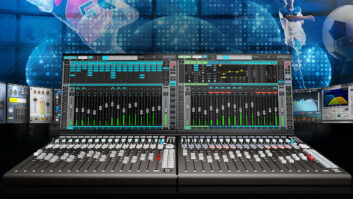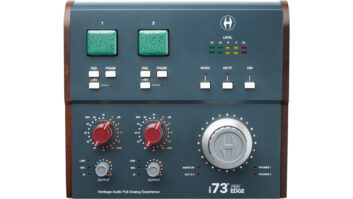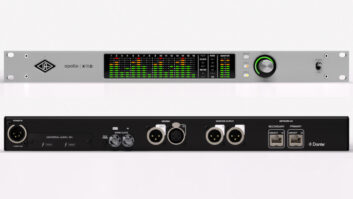by Steve Harvey.
Every year, producers for music’s biggest night, the Recording Academy’s Grammy Award telecast, challenge the audio crew to raise their game, and every year they come through, pulling off the seemingly impossible. This year’s biggest challenge was an increase in live performances of some 25 percent, which was met by a change in the music mixing arrangements implemented this year.
For this, the 51st annual Grammy Award show, XM/Effanel Music’s Nova music mixing remote truck was being used in tandem with the company’s larger L7 vehicle to allow each artist’s representatives to fine-tune their pre-mixes leading up to the broadcast. During previous years, a mirror-image mixing setup was established in a temporary building next to L7, and once an artist finished their allotted one-hour production rehearsal the music mix was taken on a hard drive to the neighboring mix room for further work offline. But this year, with L7, which is outfitted with a Digidesign ICON D-Command, and Nova, which boasts a D-Control, offering MADI connectivity, a mix was available at the secondary mix position as soon as the artist stepped off the stage, reportedly creating as much as 18 additional hours of rehearsal time for music mixers John Harris and Eric Schilling.
With the number of performances up this year from a typical 16 or 17 to two dozen, said Hank Neuberger, a supervisor of the Grammy Awards broadcast audio, during rehearsals prior to the broadcast, “The interconnectivity opened a couple of new opportunities: virtually instantaneous access to a mix the second a band walks off the deck, and, secondly, the opportunity to audition inputs from the deck while there’s a live telecast mix going on in L7.”
While an artist is performing on one of the show’s two stages during the live broadcast, he elaborated, “Being able to redirect the MADI stream they can do the essential line check confirmation in the Nova truck [for the next performance] while the first band is still onstage, then mix it where it needs to be mixed, in the L7 primary truck.”
In previous years, a dedicated audio engineer has been employed to pre-mix as many as four dozen microphones positioned in the audience for the broadcast production mixer. “In our Recording Academy television committee we have an interest in really trying to capture the live experience in the hall and transmit that on the show,” said Neuberger. “We’re always looking for where the hotspots in the audience are in an industry event.”
This year two-dozen mics were deployed around the Staples Center arena, located in downtown Los Angeles, with a single point source Holophone mic providing the main audience image. “I’m a giant fan of this device,” he enthused. “It captures a beautiful 5.1 soundstage.” According to Neuberger, Tom Holmes, returning as broadcast mixer for his third year, “felt he could get a faster response and bring that energy of the fans into the mix much quicker if he had those audience faders on his desk.”
Last year was the first time that the telecast was produced in 5.1 without a dedicated stereo mix, to dovetail with the infrastructure at CBS as the network made the digital transition. But, Neuberger noted, “For anyone listening in 2.0 on two speakers on their television, which at any given time is about 90 percent of the audience, that 2.0 mix is derived from the 5.1, which happens at your set-top box. So we have to transport a surround soundtrack from here to New York to the satellites to the cable head ends to the home. But we have to have some confidence that the way we’re monitoring the downmix here is the way it’s getting to your home.”
Assistance from Dolby Labs was critical: “We are so lucky with the commitment Dolby has made to support this show. We really rely on Dolby and their engineers to set this up and match the CBS metadata parameters,” he said.
Dolby also provided its LM100 measurement tool for each mix position so that mixers could get an accurate view of the show’s dialnorm settings. That added one more level of confidence to ensure a more uniform and accurate signal, said Neuberger.
Despite the overwhelming number of performances this year, said audio coordinator Michael Abbott before the telecast, there’s no reason why the show shouldn’t be as good, if not better, than previous years. “It’s pretty much the same crew, and the tried-and-true method. We were successful beyond expectations last year, both with the show and with awards that the show garnered, and we have the usual high expectations,” he said.
Glenn Lorbecki, the Academy’s P&E Wing co-chair, was equally bullish: “It becomes more and more clear, with every award show that I watch, that this is such an exceptional show. They don’t allow track performances; there’s no lip-syncing–hallelujah! It just sounds better and better every year.”







